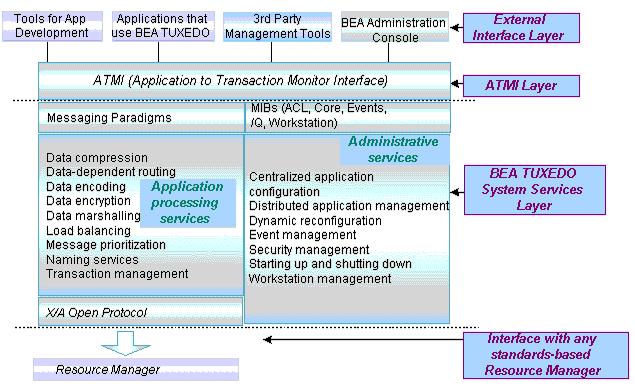


|

|
|
|
|
Online Transaction Processing: Using the Core BEA Tuxedo System
The BEA Tuxedo system is a development platform that enables you to create applications that mix and match hardware platforms, databases, and operating systems to fit your business needs. The BEA Tuxedo system provides a foundation for client/server architecture, request/response and conversational communications interfaces, transaction support, and administration for a distributed application.
The BEA Tuxedo system provides all the features and benefits of a high-end Online Transaction Processing (OLTP) system, including scalability, high performance, mission-critical reliability, and standards support.
Architecture of a Basic BEA Tuxedo System

As shown in this illustration, the BEA Tuxedo system contains the following parts.

|

|

|
|
|
|
Copyright © 2000 BEA Systems, Inc. All rights reserved.
|